nonviolent protest
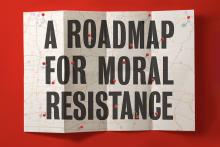
THE RIGHT TO VOTE, a foundation of our democracy and a fundamental attribute of citizenship, is under serious threat. In recent years, attacks on the integrity of the electoral system—the gutting of the Voting Rights Act, disinformation campaigns, foreign interference, and more—have weakened its overall infrastructure and cast doubt upon its results. Now we’re seeing repeated attempts, through propaganda and other means, to further undermine the system and discredit in advance the results of the 2020 election.
The president has attempted to co-opt real concerns about the upcoming election, claiming without evidence that it might be “stolen” as a result of fraud tied to vote-by-mail. His efforts deflect attention away from the ways that voter suppression efforts already underway pose a real danger, both to people seeking to exercise their hard-won right to vote and to the integrity of the electoral system itself.
As many have pointed out, there are numerous ways internal or external forces could call the results of the election into question: declaring a state of emergency that disrupts voting, delaying Election Day, interference by hostile foreign powers, tampering with voting machines or databases, and more. All of these represent legitimate threats, but perhaps the most likely scenario is that rampant voter suppression tactics impede enough voters in key battleground states to alter the presidential election outcome and which party controls Congress.
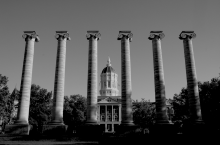
We have witnessed a remarkable series of events on the Columbia, Mo., campus of the University of Missouri this week. The university president and the chancellor of the Columbia campus resigned Nov. 9 in response to protests claiming that university leadership had failed to appropriately address and respond to a toxic racial climate on campus.
The recent racist incidents, which many students and faculty felt the administration had failed to confront, reveal a stunning lack of empathy for students of color at the university. They include: racial slurs hurled at a black student body president and a black student organization, and a swastika painted in human feces on the wall of a residence hall.
But these specific incidents merely allowed a long-simmering stew of disrespect, verbal attacks, and marginalization of students of color to come boiling to the surface.
The Columbia campus of the University of Missouri is only a two-hour drive from Ferguson, Mo. When Michael Brown was shot in August 2014, protesters took to the streets of Ferguson every night, and student activists from Mizzou were among them. They saw what standing up to entrenched institutional racism looked like, and they saw that victories could be won with non-violent protest.
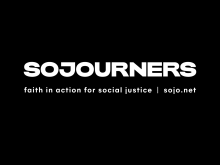
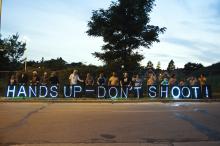
Dr. King said: a “riot is the language of the unheard.”
What happens when folks do not feel like their voices are being heard?
They shout louder.
Rioting is what almost happened in Ferguson, and all of us who live in fragile neighborhoods with a backdrop of deep racial injustice need to pay attention.
In Ferguson, a close-knit community was devastated by yet another injustice. They wanted to be heard. But as peaceful marches began, they were met with unprecedented force.
Tears were met with teargas.
It was as if authorities were putting their hands up over their ears. So the people shouted louder – and the world began to pay attention.
At a fragile moment when emotions were running high, the people of Ferguson had to choose between rioting and nonviolent direct action in the streets. A very small group (many of them arguably out-of-state activists) resorted to some forms of property damage. And it caught the media’s attention.
Some might say it hijacked the headlines.
But that is not how I will remember Ferguson.
 Editor's Note: Violence, anger, and confusion continues in Ferguson, Mo. Former Sojourners intern and current Digital and Creative Director for PICO Heather Wilson is reporting from the scene and shared her eyewitness account with Sojourners and others late Sunday night. We share it here as an important perspective in the ongoing unrest and confusion. Please keep the safety and wellbeing of all people in Ferguson in your prayers.
Editor's Note: Violence, anger, and confusion continues in Ferguson, Mo. Former Sojourners intern and current Digital and Creative Director for PICO Heather Wilson is reporting from the scene and shared her eyewitness account with Sojourners and others late Sunday night. We share it here as an important perspective in the ongoing unrest and confusion. Please keep the safety and wellbeing of all people in Ferguson in your prayers.
"Captain Johnson and the police force in Ferguson IS LYING, AND I AM BEARING WITNESS.
Two hours before curfew, I was photographing at the front of a peaceful march of all generations, calling for justice and peace in Ferguson. It was controlled and respectful—when someone stepped out the traffic lane they were marching in, they were directed back.
Without provocation, armored cars rolled up on us...yelled unintelligibly for 60 seconds and launched tear gas at us without warning. Women...children...even a woman in a wheelchair.
Captain Johnson is saying that bottles and Molotov cocktails were thrown at the front line. TONIGHT I CAN TESTIFY THAT THIS IS UNTRUE."
[view:Media=block_1]
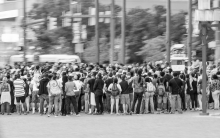
Editor's Note: In light of this week’s events in Ferguson, Missouri, several writers at ON Scripture took a few moments to reflect upon what they would/will be preaching on this Sunday. To continue the conversation, join on Twitter at #onscripture.
Eric D. Barreto, Associate Professor of New Testament, Luther Seminary: St Paul, MN
The last thing a preacher wants to do on a Saturday night is to log into Facebook.
I exaggerate, of course, but I found myself scrambling last week when I learned of Michael Brown’s shooting last Saturday. My sermon for Sunday morning was ready to go. But I had to reassess all my work when I heard the witness of so many African American friends in particular as the news from Ferguson began spreading across social media. The frustration and disbelief, rage and disappointment, resignation and passion I heard moved me. But even more convicting was the fact that so many others were simply unaware of this event at the moment and unfazed by its repercussions.
In certain communities, no one had to pay attention to Michael Brown. In certain communities, his death did not resonate with significance. In certain communities, no one would confront the preacher and ask why she did not respond to the death of this young person.
And yet in other communities, his death was a touchstone, a cause for prayer and lament and righteous anger and faithful expectation.
These distinct reactions are a raw reminder that our communities of faith remain largely segregated. Though we worship the same God, the contexts within which we seek God’s face are radically different. In such a divided context, what does it look like to love your neighbor? What does it look like to be “one” church even as we are profoundly divided?
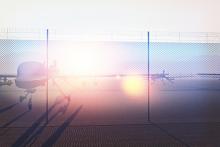
“The final perversion is the reversal of who is the real victim here: the commander of a military base whose drones kill innocent people halfway around the world, or those innocent people themselves who are the real ones in need of protection from the terror of U.S. drone attacks?”
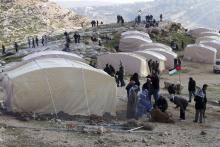
Last week, while most of Israel was focused on increasingly extreme rhetoric surrounding the upcoming elections and most Americans were listening to angry debates about guns and fiscal responsibility, a remarkable thing happened. A few dozen Palestinians captured the world’s attention quietly and peacefully.
Their methods were simple and witty. Following the example of Israeli settlers, they established “facts on the ground.” The group of Palestinians quietly hiked up a barren hillside in cold, wet weather and pitched tents, declaring themselves part of the new village of Bab al-Shams, or Gate of the Sun, a name taken from the novel by Lebanese writer Elias Khoury.
Their village was established on private, Palestinian land and the landowner (who publicly displayed his Ottoman era deed) gave them permission to camp there. But that particular piece of land is also known on an Israeli development plan map as “E-1” and came to the attention of the world recently when Prime Minister Netanyahu announced plans to annex the land for Israeli settlements. Many believe that move, which would essentially bifurcate the West Bank, would be the deathblow to the “Two State Solution.”
Finding connections between the past, present, and future at Occupy Wall Street.
I love words. They nourish me more than food. As a child (and even now, as an adult) I read novel after novel, losing myself in the characters, the plot, and the effortless descriptions of good writers. If I could swallow the New York Times, I would. (There are also many other fantastic newspaper publications out there; I'm not partial.) The discovery of Google reader has been my biggest internet distraction to date. A picture may be worth a thousand words, but I'd rather the thousand words.
Erica Chenoweth directs Wesleyan University's program on terrorism and insurgency research, which she established in 2008. Her work will be featured in the upcoming May issue of Sojourners magazine. Erica is doing innovative research on the strategic effectiveness of civil resistance and nonviolent revolution. Recently, she wrote a post at Monkey Cage on why traditional "peace and security" academic programs should include nonviolence and civil resistance tactics as part of their programs. "It is time for security studies to take nonviolent conflict seriously," writes Chenoweth, "and to incorporate such episodes and their dynamics into the canonical literature."
Last Friday, at a protest against the Israeli separation barrier in the West Bank town of Bil'in, Palestinian nonviolent activist Jawaher Abu Rahmah was killed by http://www.google.com/url?q=http%3A%2F%2Fmondoweiss.net%2F2011%2F01%2Fde...